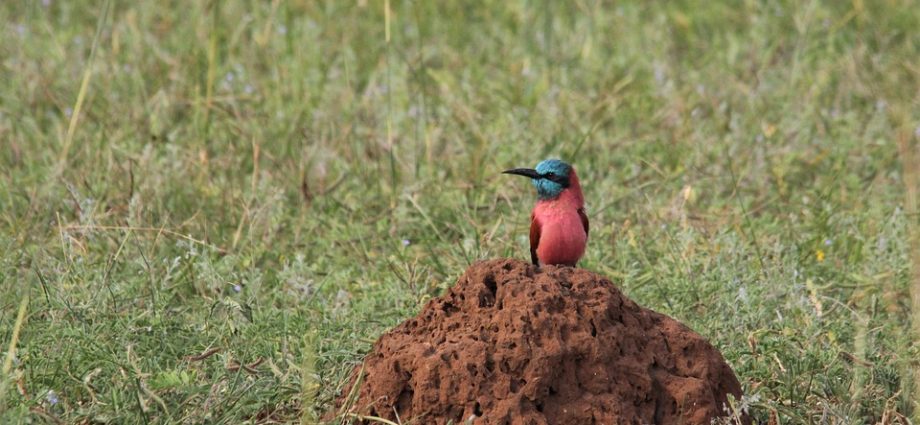Investigating the People of Northern Africa: A Journey Through History and Diversity
Northern Africa is a region of immense diversity, with a rich cultural heritage and a long history that has shaped its people and its landscapes. From the ancient ruins of Egypt and the bustling cities of North Africa, to the barren deserts and rugged mountains, Northern Africa offers an incredible array of experiences for travelers seeking adventure, education, and cultural immersion. In this article, we will take a closer look at the people of Northern Africa, their history, culture, and traditions, and explore its top 10 tourist attractions.
History and Culture of Northern Africa
Northern Africa has a long and complex history that spans thousands of years, with influences from indigenous peoples, Greeks, Romans, Arabs, Berbers, and Europeans. Its history is marked by colonization, conquest, and trade, resulting in a diverse mix of religions, languages, and customs. Today, most Northern Africans are Muslim, but there are also significant populations of Christians and Jews, as well as adherents of traditional beliefs.
The countries of Northern Africa are collectively referred to as the Maghreb, which includes Morocco, Algeria, Tunisia, Libya, and Mauritania. These countries share a common history, language, and culture, but also have unique identities and traits. For example, Morocco is known for its flavorful cuisine, colorful markets, and traditional music, while Algeria is known for its Roman ruins, Berber culture, and Islamic architecture.
Traditions and Customs of Northern Africa
Northern African cultures are steeped in tradition and customs that reflect its diverse heritage. One of the most prominent customs in this region is hospitality, where guests are treated with great respect and generosity. Sharing meals and tea with visitors is a way to show friendship and hospitality, and families will go to great lengths to make guests feel welcome.
Another important tradition in Northern Africa is family values, where families play a central role in people’s lives. Elders are respected and cared for, and children are cherished and protected. Many families live in extended households, and family ties are often stronger than individual identity.
Music and dance are also important for the people of Northern Africa, with a range of styles and genres influenced by Berber, Arab, African, and European cultures. Traditional instruments like the oud, guembri, and darbuka are common, and traditional dances like the belly dance and the chaabi are popular.
Top 10 Tourist Attractions in Northern Africa
1. Great Pyramids of Giza – This ancient structure in Cairo, Egypt is one of the world’s most iconic landmarks, with three pyramids and the Sphinx as its centerpiece.
2. Djemaa el-Fna Square – This bustling square in Marrakech, Morocco is a sensory experience, with street vendors, performers, and musicians all vying for attention.
3. El Bahia Palace – Located in the heart of Marrakech, this 19th-century palace is a testament to Moroccan architecture, featuring intricately decorated rooms, gardens, and courtyards.
4. Chott el Djerid – This immense salt lake in southern Tunisia is an otherworldly landscape with vast stretches of shimmering salt and otherworldly rock formations.
5. Roman Theater of Djemila – This UNESCO World Heritage Site in Algeria is a well-preserved Roman city with an impressive theater, temples, and public baths.
6. Valley of the Kings – Located in Luxor, Egypt, this burial ground of Egypt’s pharaohs is a fascinating glimpse into ancient Egyptian culture, featuring elaborate tombs and mummified remains.
7. Kairouan – This important Islamic center in Tunisia is home to ancient mosques, mausoleums, and souks, and is regarded as one of the best-preserved medieval Islamic cities in the world.
8. The Blue City – The city of Chefchaouen, Morocco is famous for its blue-washed buildings, narrow streets, and mountain vistas, offering a unique and tranquil atmosphere.
9. Erg Chebbi Dunes – These towering sand dunes in the Sahara desert in Morocco are a mesmerizing sight, especially at sunrise or sunset.
10. El Djem Amphitheater – This Roman-era amphitheater in Tunisia is one of the best preserved in the world, and offers a glimpse into the grandeur of ancient Roman architecture.
FAQs
Q. What is the best time to visit Northern Africa?
A. The best time to visit Northern Africa depends on the country and region you plan to visit. Generally, the best time to visit is during the cooler months of October to April, as summers can be hot and humid.
Q. Is it safe to visit Northern Africa?
A. Northern Africa is generally safe for tourists, but it is always advisable to take precautions, especially in large cities and crowded places. Tourists should be aware of pickpockets and scams and avoid traveling alone at night.
Q. What are the top foods to try in Northern Africa?
A. Northern African cuisine is rich and flavorful, with dishes like tagine, couscous, brik, and pastilla among the most popular. Seafood is also a specialty in coastal regions, and sweets like baklava and halwa are popular desserts.
Q. What languages are spoken in Northern Africa?
A. Arabic is the most widely spoken language in Northern Africa, but there are also significant populations of Berber, French, and English speakers.
Q. Are visas required to travel to Northern Africa?
A. Visas are required for most visitors to Northern Africa, but requirements vary depending on the country of origin and duration of stay. It is advisable to check with the embassy or consulate of the country you plan to visit for details on visa requirements.
